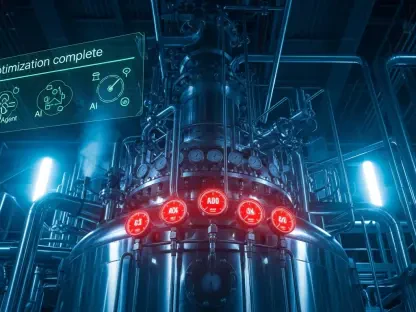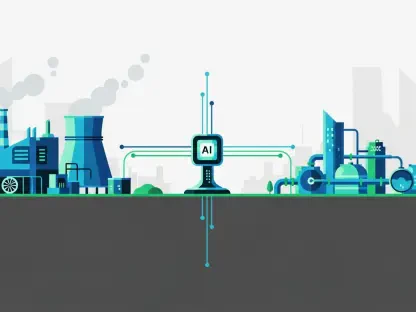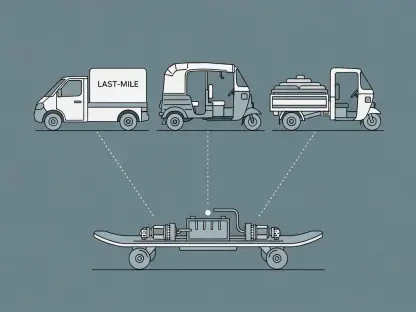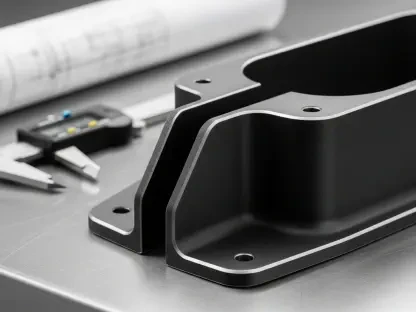Imagine a world where the hum of engines is replaced by near-silent electric motors, where urban air quality improves with every vehicle on the road, and where the automotive industry reinvents itself to combat climate change through innovative technologies. This vision is rapidly becoming reality as electric vehicle (EV) manufacturing takes center stage in the global push for sustainable transportation. With the industry projected to dominate automotive production in the coming decades, understanding the technologies and processes behind EV manufacturing is crucial. This review delves into the cutting-edge advancements, operational intricacies, and market impacts of EV production, spotlighting facilities like JSW MG Motor’s Halol plant in India as a benchmark for innovation and adaptability.
Understanding the Core of EV Manufacturing
At its essence, EV manufacturing diverges significantly from traditional automotive production by prioritizing electric powertrains over internal combustion engines. This shift necessitates specialized components like high-capacity batteries and electric motors, fundamentally altering assembly processes and design philosophies. The emphasis on precision and efficiency sets EV production apart as a technology-driven field, demanding new skills and infrastructure to meet stringent performance and safety standards.
The global relevance of this technology cannot be overstated, as governments worldwide enforce policies to reduce carbon emissions and promote cleaner alternatives. Consumer demand for eco-friendly transportation further fuels the urgency for manufacturers to scale up EV production. Facilities like the Halol plant exemplify this trend, dedicating a substantial portion of capacity to electric models and aligning with international sustainability targets.
Core Technologies and Processes Driving EV Production
Battery Production and Assembly: The Heart of EVs
Battery technology stands as the cornerstone of electric vehicles, directly influencing range, performance, and cost. The production and assembly of these power units involve complex stages, from cell integration to rigorous safety validations. At plants like Halol, in-house battery assembly includes meticulous processes such as voltage testing, securing cells with adhesives, and conducting welding operations, ensuring each unit meets exacting standards before integration into vehicles.
Beyond assembly, extensive testing for insulation resistance and performance under varying conditions is critical. These steps, often spanning several hours per battery, highlight the labor-intensive nature of ensuring reliability and efficiency. The focus on battery innovation continues to drive research into longer-lasting, faster-charging solutions that could redefine EV capabilities in the near future.
Multi-Model Assembly Lines: Flexibility in Production
Modern EV manufacturing facilities are increasingly adopting multi-model assembly lines to cater to diverse market needs. This approach allows a single plant to produce a range of vehicles, from compact electric cars to luxury models, using shared infrastructure. At the Halol facility, multiple assembly lines handle different vehicle types, balancing operational efficiency with the flexibility to adapt to shifting consumer preferences.
Such systems are designed to optimize space and resources while maintaining high quality across varied production runs. The ability to switch between models without significant downtime is a technological feat, ensuring that manufacturers can respond swiftly to market demands. This adaptability is vital in a competitive landscape where consumer segments range widely in price sensitivity and feature expectations.
Innovations Shaping the Future of EV Manufacturing
The EV manufacturing sector is witnessing a wave of innovation, with Industry 4.0 technologies like smart automation and data analytics enhancing production precision. Unlike the push for full automation in some industries, many EV manufacturers emphasize a human-centric approach, valuing skilled workers for their problem-solving abilities and attention to detail. This balance of technology and human expertise is evident in facilities that prioritize workforce training alongside digital tools.
Sustainability also plays a pivotal role in shaping trends, with a growing focus on using eco-friendly materials and reducing waste during production. Manufacturers are exploring ways to recycle components and minimize the environmental footprint of their operations. These efforts align with global goals to create a circular economy within the automotive sector, pushing the boundaries of what EV manufacturing can achieve.
Another emerging trend is the customization of vehicles to meet specific regional needs, reflecting consumer preferences for affordability or luxury. Companies are investing in modular designs that allow for quicker adaptations, ensuring that innovation keeps pace with market evolution. This dynamic environment promises continuous advancements that could further democratize electric mobility.
Real-World Impact and Market Performance
The tangible outcomes of EV manufacturing are visible in the growing presence of electric vehicles on roads worldwide. Models produced at the Halol plant, such as the Windsor and Comet, have captured significant market share in India, demonstrating how advanced manufacturing translates into consumer trust and sales leadership. These vehicles cater to distinct segments, from budget-conscious buyers to those seeking premium features, illustrating the versatility of modern production capabilities.
Beyond individual sales, the broader impact on urban mobility is profound, as EVs contribute to reduced emissions and noise pollution in densely populated areas. This shift supports environmental goals, aligning with government incentives for electric adoption. The success of these models underscores the potential for EV manufacturing to reshape transportation infrastructure and public policy on a global scale.
Challenges Hindering EV Manufacturing Progress
Despite its promise, EV manufacturing faces significant hurdles that temper its rapid expansion. Supply chain constraints, particularly for critical components like batteries, pose ongoing risks to production timelines and costs. Securing a stable supply of raw materials remains a challenge, often exacerbated by geopolitical factors and limited mining capacities for essential minerals.
High production costs also limit accessibility, as the expense of advanced technologies can translate into higher vehicle prices for consumers. Regulatory inconsistencies across regions further complicate scaling efforts, with varying standards and compliance requirements creating operational inefficiencies. Manufacturers are actively seeking solutions through strategic partnerships and localized sourcing to mitigate these barriers.
Technical challenges in maintaining quality at higher production volumes add another layer of complexity. Ensuring consistency across large batches requires continuous investment in training and equipment upgrades. Addressing these limitations will be crucial for the industry to meet growing demand without compromising on safety or performance.
Future Prospects for EV Manufacturing Technology
Looking ahead, the trajectory of EV manufacturing appears poised for transformative growth, driven by anticipated breakthroughs in battery technology. Innovations such as solid-state batteries could dramatically enhance range and charging speeds, addressing current limitations and expanding market appeal. Research in this area is accelerating, with potential rollouts expected within the next few years.
Capacity expansion is another key focus, as seen in plans for facilities like Halol to increase output and introduce new models. Such developments aim to meet rising global demand while diversifying product offerings to include luxury and niche segments. These expansions signal a commitment to solidifying EV dominance in the automotive landscape over the coming decade.
The long-term impact of these advancements promises a substantial reduction in carbon emissions, aligning with international climate commitments. As manufacturing processes become more efficient and accessible, the vision of a fully electric transportation ecosystem moves closer to reality. The industry’s evolution will likely influence everything from energy grids to urban planning, marking a new era of mobility.
Final Reflections on EV Manufacturing’s Journey
Reflecting on the journey of EV manufacturing, it is evident that the technology has carved a significant niche in the automotive world by blending innovation with practical application. The strides made in battery production and flexible assembly lines have showcased the industry’s ability to adapt and thrive amidst challenges. Market successes, particularly in regions like India, have proven that consumer acceptance is not just possible but accelerating.
Looking back, the obstacles of supply chains and costs have been formidable, yet the persistent push for solutions through partnerships and technological advancements has laid a strong foundation. Moving forward, stakeholders should prioritize investment in next-generation batteries and sustainable materials to further reduce costs and environmental impact. Collaborative efforts between governments and manufacturers could streamline regulations, ensuring a smoother path for global expansion.
As a final consideration, the focus should shift toward educating consumers about the long-term benefits of EVs, fostering greater adoption through incentives and infrastructure development. Establishing robust recycling systems for EV components would also ensure sustainability remains at the core of this revolution. These actionable steps could propel EV manufacturing into a future where it not only transforms transportation but also redefines societal approaches to energy and the environment.









